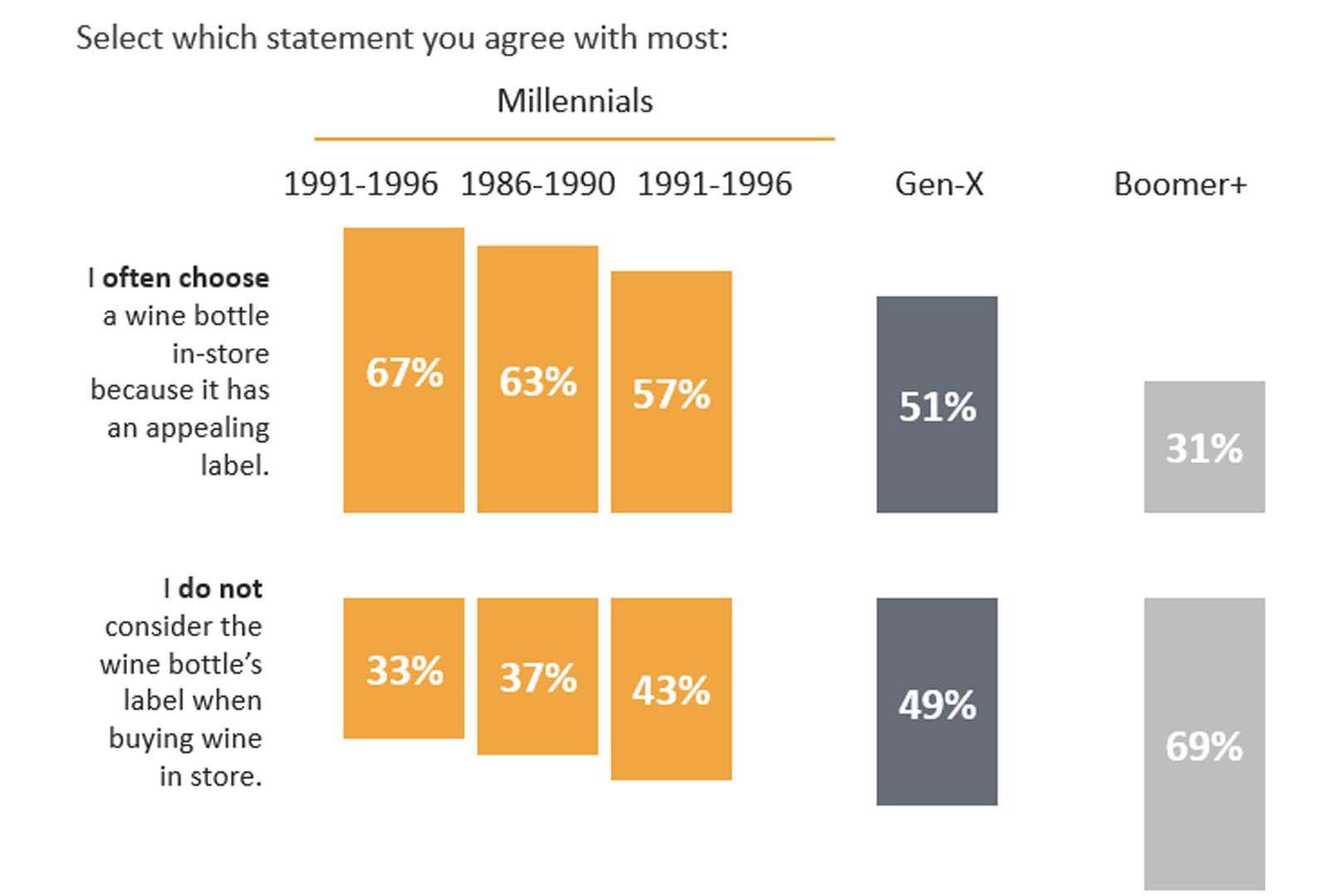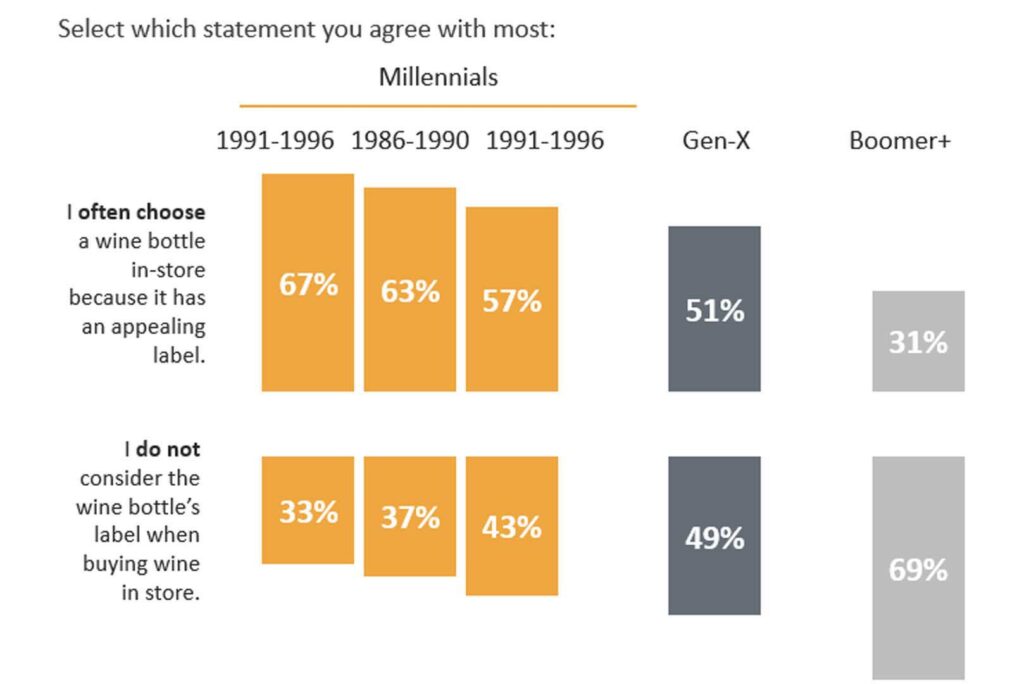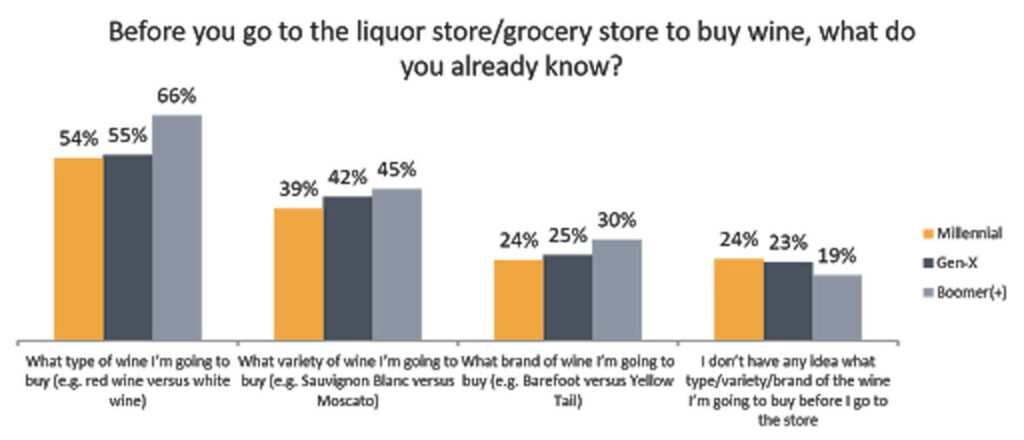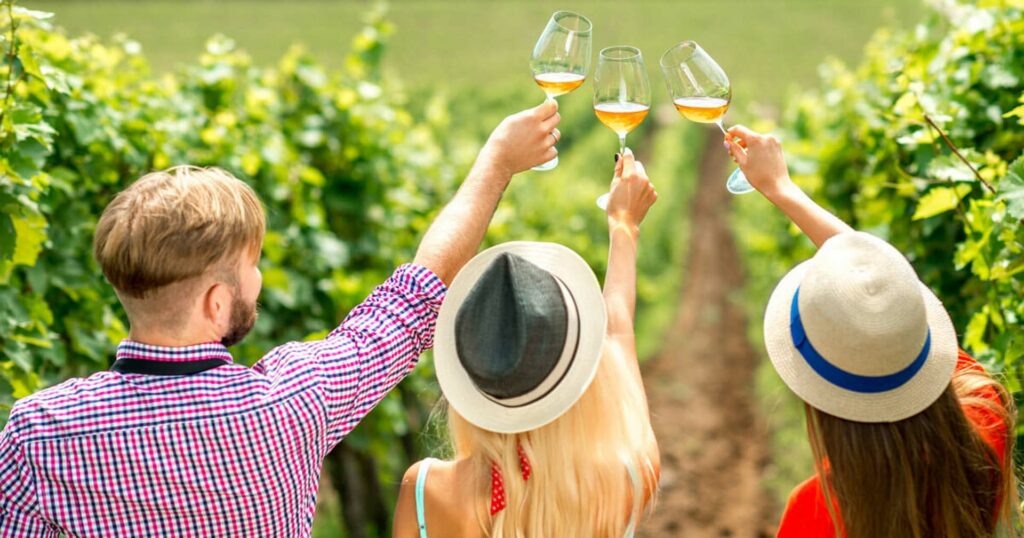
Nice labels, lack of wine education, interest for food pairing: welcome to the Millennials’ wine era…
By Giovanna Caravetta, contributor
Wine in a can, wine with a screw-top lid, single-serving wine bottles, monthly wine box subscriptions. What do all of these have in common? They all are changes that have been introduced in recent years as a way for winemakers to keep up with, market, and respond to the ever-changing trends and preferences of millennial wine consumers.
Though demographers disagree on which age range encompasses the millennial generation, let’s consider the age range given by Pew Research Center, which includes those people born between 1981 and 1996. These 22- to 36-year-olds, as the most recent study conducted by Wine Market Council in 2015 demonstrates, now comprise 33% of the market share, whereas baby boomers make up 30% of the market share. This number is only continuing to grow exponentially and will continue to affect the wine industry.
As millennials, we have the ability to influence change, extending as far as the demand we have for products or even the types of products we want to consume. If we get down to the basics of it, our preferences for wines have created a demand for wine producers to fulfill, which continues to dictate much of the production output in the wine industry. That being said, winemakers are facing challenges and having to get creative in ways they have not had to before with older generations.
Millennials in the US have created a new era for the wine industry in that their tendencies have shifted to drinking wine in larger amounts. Winemakers are noticing this trend and seeing that millennial couples are no longer stopping at just enjoying a glass of wine with dinner, but they are coming home and nearly finishing the bottle. As Wine Market Council also reports, millennials average 3.1 glasses of wine per occasion. This tendency alone is a shift from previous generations, but it barely scratches the surface of changing trends millennial consumers have effected.
Current trends in wine consumption
Let’s break it down. The millennial influence has saturated so many areas of today’s society, so it is no surprise that its reach has impacted even the current wine consumption trends. Millennials, when compared with older consumers, differ in that they are quite value-focused consumers who are more interested in the wine’s aesthetic appearance. Labels certainly matter to millennials, and findings from studies conducted by Collage Group in 2018 demonstrate that they are more likely to buy a bottle of wine if they think the label is appealing.

Photo from Collage Group
Put quite simply, millennials have such an affinity for wine that they are changing how it is being made; however, the research shows that they lack the knowledge and experience to fully appreciate fine wines. This is not meant to be an insult. In fact, data show that millennials have a better appreciation for wine than other generations had when they were our age. However, as products of the Great Recession of 2008, value-driven millennials are financially limited to buying things after having considered both their desire and financial capacity to purchase.

Photo from Collage Group
As we break down the millennial segment a little further, we can see more clearly that millennial women, who tend to be the primary shoppers in today’s households, are the ones who are making the buying decisions and driving wine trends—as reported by Chicago Tribune. This is to be expected, as “women and wine make a natural pairing because wine is meant to be shared, and that works with the way women socialize.” Additionally, millennial women are less likely than older generations of women to go into a store already knowing what wine they are about to buy or even what type.
Integrating foreign travels into everyday life
As trends are favoring a growth toward millennials studying abroad, there is a greater emphasis on incorporating some of the cultural aspects upon returning home, which includes integrating pairing food with wine. Each year, more millennials than ever are partaking in this opportunity as a means to learn firsthand about food culture and the importance of wine.

That being said, it is quite evident that our generation is benefitting from exposure to countries like Italy and Spain where the food and wine culture is about the experience of leisurely savoring instead of mindlessly devouring. After spending time in a foreign country, we can either choose to allow this to expand our perceptions of wine as part of a meal experience, or we can continue to perpetuate the binge mentality associated with millennials and wine.
Something I value from my own study abroad experience in Italy was the way that indulging in a glass of wine while eating a meal with friends would instantly add a certain vibrancy and joviality to the moments we shared. As millennials have also come to realize, wine is ingrained and embedded so richly in Italian culture for a reason.
Take a chance on something new
Millennials are on track—as the 2018 State of the Wine Industry estimates—to hold the largest share of US wine consumption by 2026. What does this mean? Our impact on the wine industry is only going to grow exponentially. It would be of great benefit for millennials to continue to develop their preferences in a way that also positively correlates with a growth in the wine industry.
How can we improve our tastes and broaden our horizons when it comes to our wine preferences? We can open our minds to the actual world of wine that exists right outside our reach and intentionally consume each bottle of wine. Let’s continue to care more about experiences and integrate our desires for adventure in the wines we drink as well.
Next time you are out and in search of a wine to bring home, why not try something new? What if—instead of just hurriedly grabbing the first bottle of Chardonnay or Cabernet Sauvignon that catches our attention—we would take a unique bottle home and do some research on the wine (e.g., the wine region, the types of grapes used, the winery who produced it, etc.)? What if your new favorite wine was only one adventurous step outside of your comfort zone?
ABOUT GIOVANNA
As an Italian-American, Giovanna is mesmerized with the food, wine, language, and culture of Italy. While in college, she spent a semester studying and living in Florence, and her passion for la dolce vita and love for all things Italy grew exponentially. During her time in Florence, she studied pairing food and wine, and she became enamored with the way that wine amplifies and accentuates the flavors of different foods. With a heart for authenticity, she strives to share her perspective on the significance of truly dynamic food and wine pairings.



